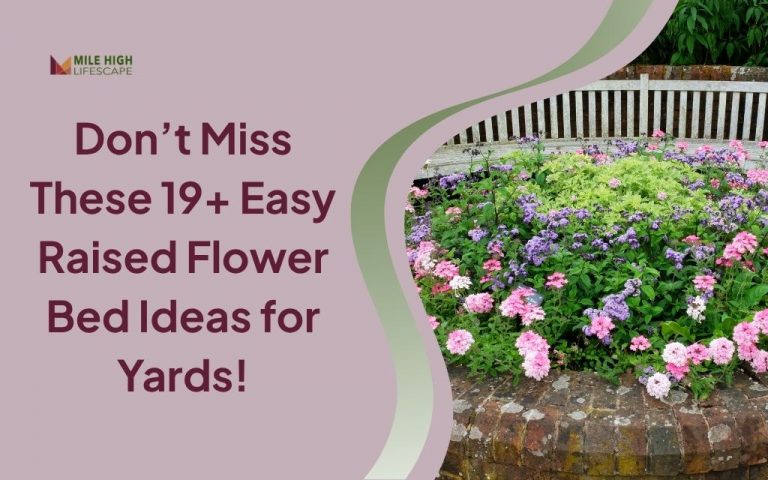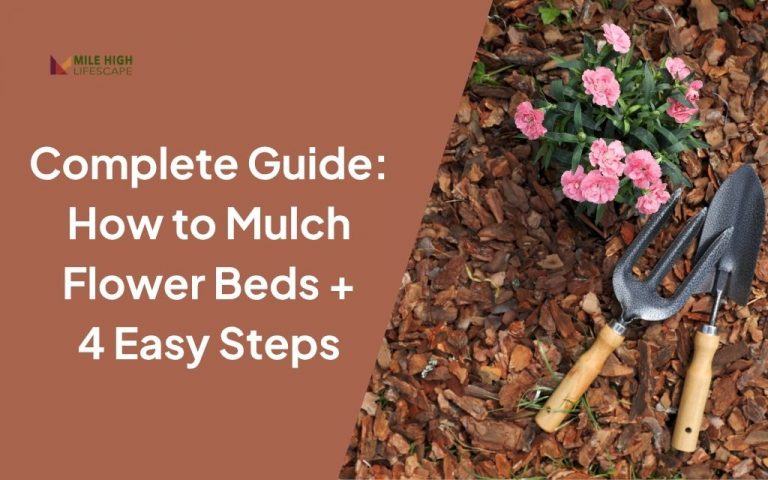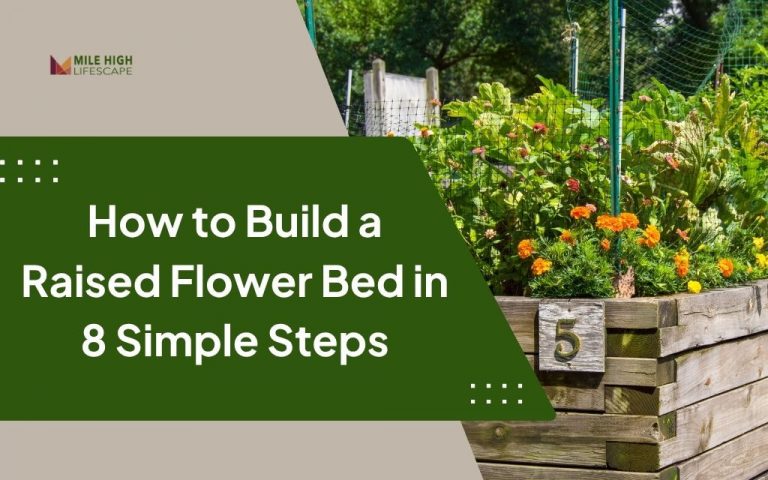Retaining Walls: 4 Types and Cost-Effective Designs for Your Landscape
Retaining walls are more than just functional structures—they are an essential part of maintaining a safe and visually appealing landscape. At Mile High Lifescape, we specialize in designing and constructing high-quality retaining walls tailored to the unique needs of your property. Whether you’re managing sloped terrains, controlling erosion, or enhancing your outdoor space, our expertise ensures your retaining walls are as durable as they are beautiful.
Choosing Mile High Lifescape means you’re working with a team that understands the challenges of Denver’s landscape and weather. From gravity retaining walls to custom designs, we provide innovative solutions that elevate the functionality and aesthetics of your property. Let us help you create a landscape that stands the test of time while adding value to your home or business.
The Importance of Retaining Walls in Denver: Functionality, Aesthetics, and Stability
Retaining walls are an essential feature in landscaping and construction, particularly in areas like Denver where the terrain is often sloped or uneven. These walls are sturdy structures designed to hold back soil and create level surfaces, preventing erosion and managing water runoff. Beyond their functional role, retaining walls also contribute to the aesthetic appeal of outdoor spaces, making them a versatile addition to both residential and commercial properties.
At Mile High Lifescape, we specialize in creating durable and visually appealing retaining walls that not only protect your property but also enhance its overall design. Understanding their purpose and benefits can help you decide why retaining walls are an investment worth making in Denver.
What Are Retaining Walls and Their Purpose in Colorado?
A retaining wall is a specially engineered structure built to retain soil on one side while leaving the other side free for pathways, gardens, or other uses. They are particularly valuable in managing sloped terrains and preventing soil from shifting due to gravity or water flow.
Key Purposes of Retaining Walls:
- Preventing Soil Erosion: Retaining walls stabilize sloped landscapes by holding soil in place, protecting your property from erosion caused by wind, rain, or melting snow.
- Managing Water Runoff: By controlling the flow of water, retaining walls help prevent flooding and water pooling, which can damage nearby structures and vegetation.
- Creating Usable Space: On sloped properties, retaining walls create flat, functional areas for patios, gardens, and walkways.
Whether you’re dealing with a steep hillside or want to add structure to your yard, retaining walls play a crucial role in maintaining safety and usability.
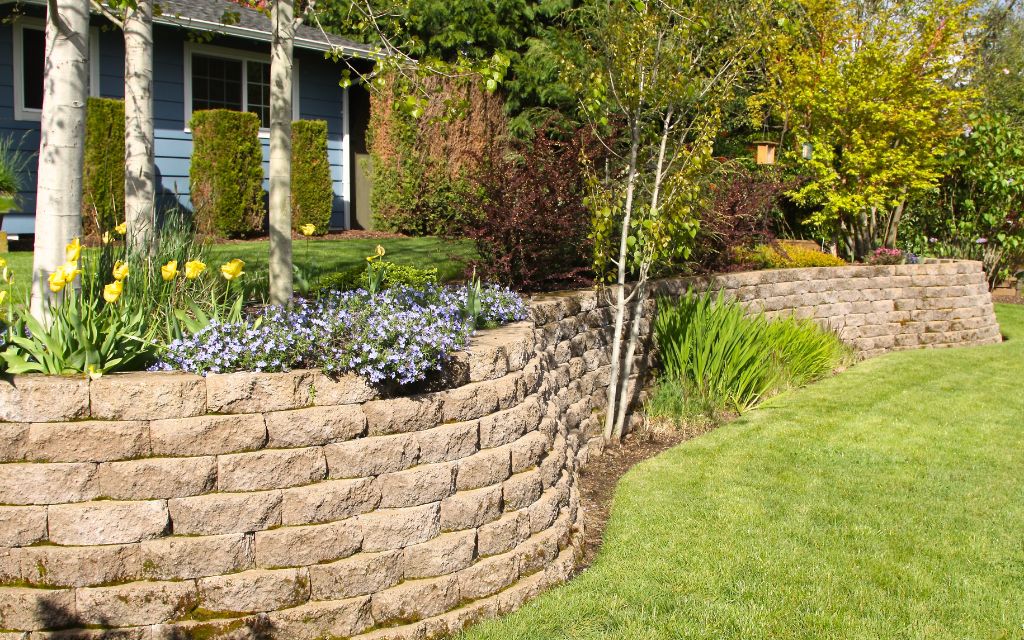
Why Retaining Walls Are Essential in Denver’s Landscape
Denver’s unique topography and climate make retaining walls an important feature for many properties. The Mile High City is known for its hilly terrain, seasonal snowmelt, and unpredictable weather patterns, all of which can pose challenges for property owners.
How Retaining Walls Add Value in Denver:
- Adaptation to Sloped Terrain: Many properties in Denver have uneven or sloped land. Retaining walls provide a practical solution by leveling areas for landscaping and construction.
- Weather Protection: The region’s heavy snowfalls and frequent rainstorms can lead to significant water runoff, making retaining walls vital for managing moisture and preventing soil erosion.
- Aesthetic Enhancement: Retaining walls are not just functional—they can also be designed to complement the style of your home or outdoor space, adding beauty and value to your property.
By choosing professional services like Mile High Lifescape, you ensure that your retaining wall is designed to meet the specific challenges of Denver’s environment while enhancing your property’s appearance and functionality
Retaining walls are much more than structural features—they are an investment in the safety, usability, and beauty of your outdoor spaces. With Mile High Lifescape, you can trust that your retaining wall will be expertly crafted to address your property’s unique needs while seamlessly integrating into its natural surroundings. Contact us today to learn more about how we can transform your landscape with retaining walls that stand the test of time.
Types of Retaining Walls in Denver
Retaining walls are versatile structures that serve both functional and aesthetic purposes, especially in Denver’s varied terrain. Here are four common types of retaining walls used in residential and commercial landscaping across the Mile High City:
Gravity Retaining Walls in Mile High City
Gravity retaining walls are designed to rely on their own weight to resist the pressure of the soil they are retaining. Typically built for short to medium heights, these walls are ideal for straightforward applications where structural stability is needed. Constructed using durable materials such as concrete, stone, or brick, gravity retaining walls ensure longevity and strength, making them a practical choice for many landscaping projects. In Denver, these walls are especially well-suited for residential areas and gardens, where they provide both functional support and aesthetic appeal. Their simplicity and effectiveness make them a popular option for smaller-scale projects.
Cantilever Retaining Walls in Colorado
Cantilever retaining walls are designed with a vertical stem and a horizontal base slab, which work together to use leverage in counteracting soil pressure. The weight of the retained soil further stabilizes the structure, making it a reliable choice for many landscaping and construction projects. These walls are typically constructed from reinforced concrete, offering an ideal combination of strength and flexibility to handle substantial loads. Cantilever retaining walls are particularly well-suited for heights of up to 5 meters, making them an excellent option for sloped terrains often found in Colorado. Their durability and functionality make them a preferred choice for larger residential properties and commercial applications where robust support is essential.
Anchored Retaining Walls in Denver
Anchored retaining walls are designed to provide additional stability by using deep-set anchors embedded into the ground. These anchors, tensioned with cables, reinforce the wall’s structure, making it ideal for supporting taller or heavily loaded walls. Built with materials such as concrete, steel, or wood, and combined with reinforced anchors, these walls offer enhanced durability and reliability. Anchored retaining walls are particularly useful for properties with limited space, as their design allows for maximum support with a minimal footprint. In urban areas near Denver, where space constraints are common, anchored retaining walls provide innovative and effective solutions for creating stable and secure landscapes.
Gabion Retaining Walls in Colorado
Gabion retaining walls are constructed using wire mesh boxes filled with rocks or stones, creating a structure that is both flexible and permeable. This design makes them an excellent choice for stabilizing slopes and effectively managing water flow, especially in areas prone to erosion. The materials used for gabion walls include galvanized wire mesh for the cages and locally sourced stones, making them a cost-effective and environmentally friendly option. Gabion retaining walls are widely used in Denver landscapes for erosion control and slope stabilization, while their rugged and natural appearance adds a unique aesthetic element to outdoor spaces, blending functionality with visual appeal.
Each type of retaining wall offers distinct benefits tailored to specific property needs. Whether you need a small garden wall or a large commercial solution, Mile High Lifescape ensures the right retaining wall design for your Denver property. Contact us to discuss your project and discover how we can create a retaining wall that’s both functional and beautiful.
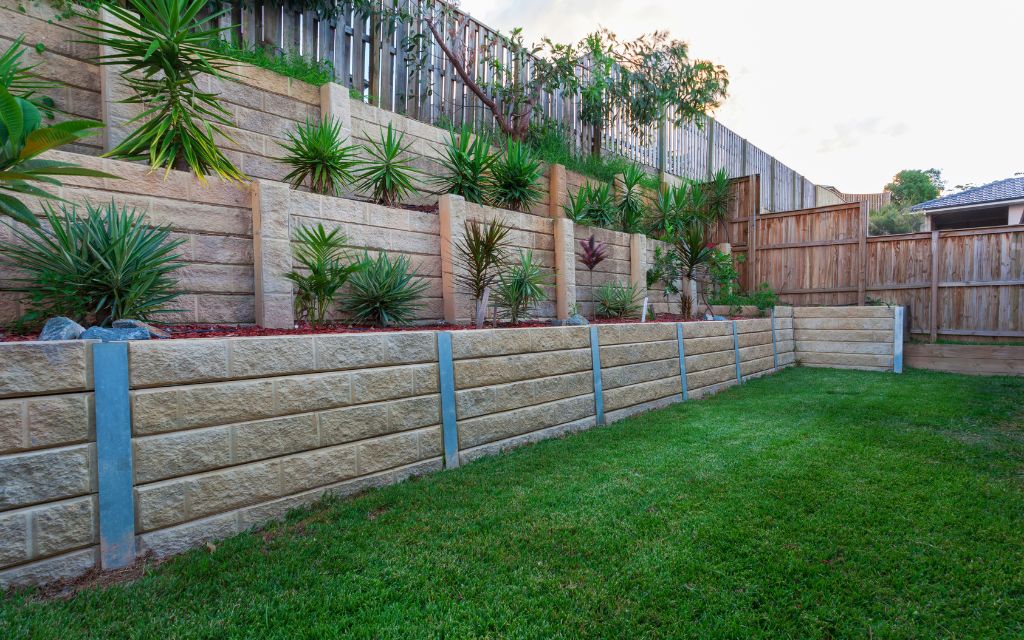
Benefits of Professional Retaining Wall Installation in Denver
When it comes to installing retaining walls in Denver, professional services offer unmatched expertise, quality, and long-term reliability. While DIY efforts may seem cost-effective, retaining wall construction requires specialized knowledge, precision, and the right materials to ensure stability and durability. Here’s why choosing professionals like Mile High Lifescape is the smartest decision for your landscaping needs.
Why Choose Professional Services Like Mile High Lifescape?
Mile High Lifescape stands out for its expert approach to retaining wall installation, ensuring every project is handled with precision and care. Their team brings years of experience in designing and constructing retaining walls that not only serve functional purposes but also enhance the beauty of outdoor spaces. By entrusting your project to Mile High Lifescape, you gain peace of mind knowing that your wall will be built to last and tailored to your specific property needs.
Quality and Customization by Mile High Lifescape in Colorado Retaining Walls
- Premium Materials and Best Practices: Mile High Lifescape uses only high-quality materials, such as reinforced concrete, durable stones, and galvanized wire, to construct retaining walls that withstand Denver’s challenging climate. Their adherence to industry best practices ensures that every wall meets high standards of safety and durability.
- Tailored Solutions for Mile High City Properties: No two properties are alike, and Mile High Lifescape understands the importance of customized solutions. Their team assesses your landscape’s unique characteristics, such as soil type, slope, and drainage needs, to design a retaining wall that perfectly fits your space. Whether it’s a decorative garden wall or a functional structure for erosion control, they create designs that align with your vision and enhance your property’s appeal.
Cost of Retaining Walls in Denver
The cost of installing retaining walls in Denver can vary widely depending on the materials, design, and specific site conditions. Understanding these factors can help you make an informed decision while staying within budget. Whether you’re looking for a cost-effective option or a customized premium solution, there are plenty of choices to suit your needs.
Affordable Retaining Wall Options in Colorado
- Gabion Walls Gabion retaining walls are one of the most affordable and durable options available for Denver properties. Made from wire mesh boxes filled with rocks, these walls are cost-effective due to their simple construction and the use of locally sourced materials. They’re particularly effective for erosion control and slope stabilization.
- Wooden Retaining Walls: Wooden walls are another budget-friendly option, offering a natural aesthetic that complements many landscapes. While they are less expensive upfront, they may require more maintenance over time due to susceptibility to weather-related wear and tear. For small to medium-scale projects, wooden retaining walls can be a practical choice.
Factors Influencing Retaining Wall Costs in Denver
- Material Selection and Availability:
The choice of materials significantly impacts the overall cost. For instance, concrete and natural stone are more durable but tend to be pricier than wood or gabion constructions. Material availability in Colorado also affects pricing, with locally sourced options often being more economical. - Labor Intensity and Construction Time:
The complexity of the retaining wall design and the time it takes to construct will influence labor costs. For example, anchored or cantilever walls may require more time and expertise compared to simpler gravity walls. - Site-Specific Considerations:
Factors like soil type, slope, and wall height play a critical role in determining the cost. Properties with challenging terrain or poor soil conditions may require additional preparation or reinforcement, adding to the overall expense.
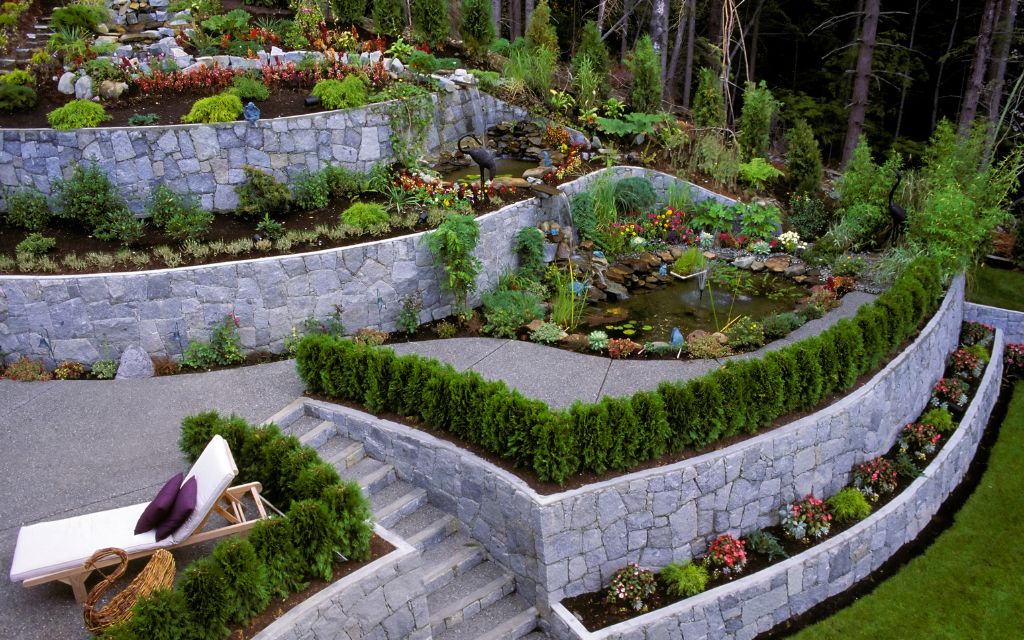
Investing in a retaining wall is not just about managing costs—it’s about ensuring long-term stability and functionality. At Mile High Lifescape, we provide transparent pricing and tailored solutions to fit your budget and property needs. Contact us today to get a detailed estimate for your retaining wall project in Denver and experience the best in quality and value!
Retaining Wall Design and Construction Details in Denver
Designing and building a retaining wall in Denver requires careful planning and attention to detail. With the city’s unique climate and terrain, it’s essential to prioritize stability, functionality, and durability. Here’s how professional services like Mile High Lifescape approach retaining wall design and construction.
Key Retaining Wall Design Principles for Colorado
Structural Stability Through Engineering:
The foundation of any retaining wall lies in its structural integrity. Professional engineering ensures that the wall can withstand the pressure of retained soil, water, and other environmental factors. Reinforcement techniques, such as the use of steel bars or anchors, are often employed to enhance stability.
Incorporating Drainage Solutions:
Denver’s unpredictable weather, including heavy rain and snowmelt, makes proper drainage a critical component of retaining wall design. Without adequate drainage systems, water buildup can weaken the wall over time. Solutions like gravel backfill, weep holes, and perforated pipes are integrated to manage water flow and maintain the wall’s strength.
Construction Process for Retaining Walls by Mile High Lifescapes
- Site Assessment and Preparation:
Every retaining wall project begins with a thorough assessment of the site. This includes evaluating the soil type, slope, and drainage requirements unique to Denver’s landscapes. Proper preparation ensures a stable foundation and minimizes potential issues during construction.
- Selection of Materials:
Choosing the right materials is essential for durability and performance. Materials like reinforced concrete, natural stone, or gabion systems are selected based on the wall’s purpose, aesthetic preferences, and Colorado’s climate. Mile High Lifescape prioritizes high-quality, weather-resistant materials for long-lasting results. - Step-by-Step Construction Methodology:
- Foundation Setup: Excavation and leveling of the site to create a stable base.
- Wall Construction: Layering materials with precision to ensure structural integrity. Reinforcements like steel bars or anchors may be added as needed.
- Drainage Installation: Incorporating gravel, drainage pipes, or weep holes to prevent water accumulation.
- Final Touches: Backfilling the wall, compacting the soil, and ensuring the area is clean and functional.
Designing and constructing retaining walls in Denver requires a combination of expertise, proper materials, and attention to detail. At Mile High Lifescape, we follow these principles to deliver retaining walls that are not only functional but also enhance the beauty of your property. Contact us today to learn more about our design and construction process and start building a retaining wall that will stand the test of time!
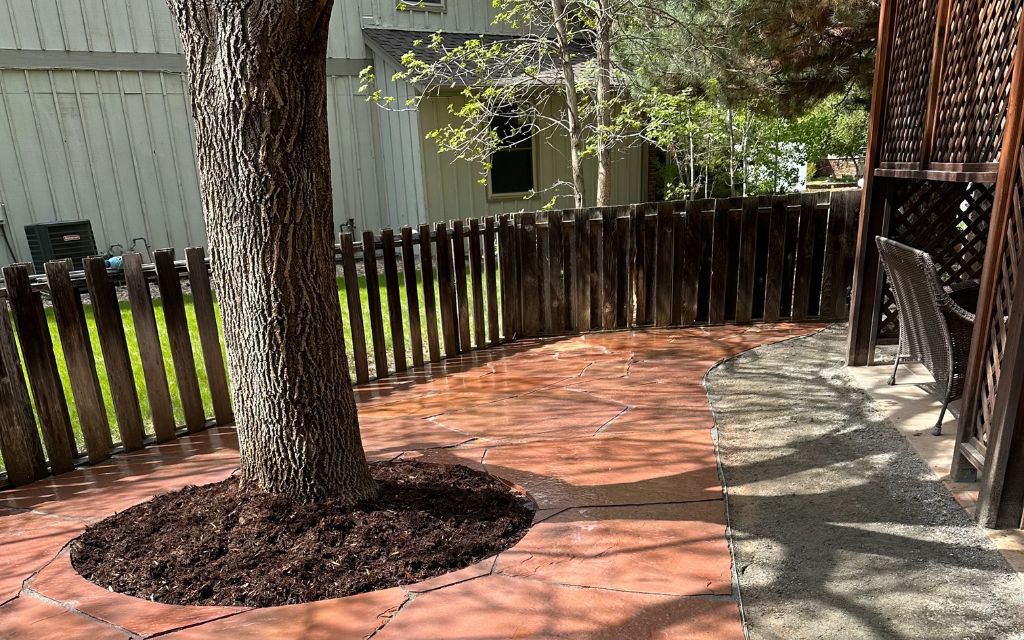
Conclusion
Retaining walls are a critical investment in the safety, functionality, and beauty of your landscape. With the expert team at Mile High Lifescape, you can be confident in the design and construction of retaining walls that meet your specific needs. From cost-effective solutions to customized designs, we ensure your retaining wall is built to last. Contact us today to learn more and let us transform your property with professional retaining wall services.
